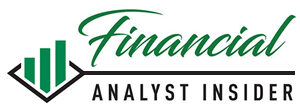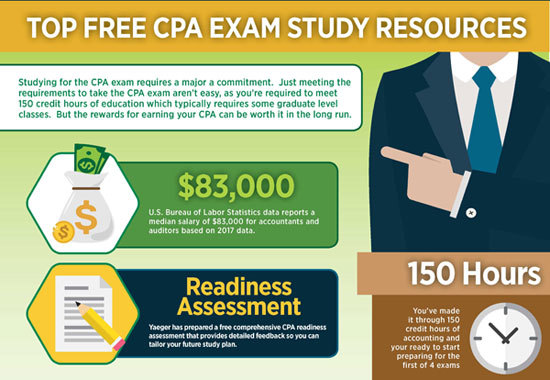When you sign up to take the CPA exam, you have 18 months to pass all 4 sections. For most people, that means you should expect to study close to 400 hours over 18 months.
That is a major undertaking so it is critical to understand how to best prepare for the exam based on your personal learning style.
This article will provide you a detailed study plan to cover the major question types you will see on the exam. It will also help you discover your personal learning style and how to use that to your advantage to make your studying more efficient.
TOP CPA Exam Resources
- Easily compare the Best CPA Exam Prep Course options.
- Make sure to check our full list of CPA Exam Review Course Discounts.
Take our simple CPA Exam Quiz to discover your natural learning style.
How to Prepare for Multiple Choice Questions
The most common question type on the CPA exam is multiple choice questions. The first two testlets on each section of the exam will include multiple choice questions.
For detailed information on each section, read our CPA Exam Parts and Section guide.
All multiple choice questions will include the following elements:
- Each question stem will contain the information necessary to answer the question. The question stem may also include unnecessary information included as a distraction. Train yourself to recognize only the information needed to answer the question.
- There will only be 1 correct answer out of 4 potential choices. However, some questions will have answers that allow for more than one answer choice to be included as a correct answer.
Strategies to Answer Multiple Choice Questions
Cross out Answer Choices on your Note board
You will take the CPA exam on a computer, but you will have note boards provided by the test center.
The note boards are laminated sheets and you are provided with a fine point marker to take notes. The test center will provide multiple note boards if requested.
Although the note boards are not as user friendly as a pen and paper, they can still be beneficial. For each multiple choice question, write down A,B,C, and D on the note board.
As you read the question, you’ll recognize that certain answer choices are clearly incorrect. Cross out the incorrect answer choices on your note board.
This will help you narrow down your answer choices and increase the probability of correctly answering a question, especially if you’re not sure of the correct answer.
You might think you can keep track of the incorrect choices in your head, but we strongly suggest you resist this urge.
You are going to be under extra stress on exam day and keeping track of wrong answers in your head is one less thing you need to remember.
Read the last sentence of the question first
Some multiple choice questions will include multiple sentences with each question. By reading the last sentence of the question first, you will know what to look for in the body of the question.
This will allow you to focus on only the information you need to answer the question and you can ignore the unnecessary information.
Example 1
The Smith company has 5,000 widgets carried in inventory at a cost of $50,000. If the widgets are upgraded for $20,000, they could be sold for $75,000. The sales manager also has the option of selling the widgets for scrap at $10,000. When evaluating the options, the opportunity cost would be:
- A: $20,000
- B: $10,000
- C: $30,000
- D: $50,000
The correct answer is “B” $10,000. By reading the last sentence first, you know to look for the opportunity cost for the widget manufacturer.
In this question, the opportunity cost represents the amount of money the sales manager could receive by selling the existing widgets for scrap at $10,000.
The other information in the question is not relevant and is used as a distraction. The extra information also causes you to spend more time evaluating each dollar amount to see if it fits the question.
By reading the last sentence first, you are saving extra time that you can use later in the exam for harder questions.
As You Read the Beginning of the question, Write Down Critical Information
Since you already started by reading the last sentence first, you will already know what information you need to look for to answer the question.
As you go back and read the question, be sure to write down critical information you find that you need to answer the question.
This works best when you are answering questions with extra numerical information. So use this with questions that ask about ratios or other questions that require you calculate values based on information provided.
You can also use the spreadsheet tool to keep track of numbers.
Compare your Calculated Answers with the Answer Choices
You should always use the spreadsheet tool when you need to compute an answer. In most cases, you will find your calculated value as one of the answer choices.
However, you might also make an error when you are doing your calculation.
If you don’t see your calculated value as one of the answer choices, this will immediately tell you that you need to change an assumption you made in your calculation.
Use the Answer Choices to Jog your Memory
On more difficult questions, you may struggle with knowing how to answer the question. One option is to read the answer choices. You want to try this after reading the last question first.
If you know the question is asking something you don’t know, reading the answer choices can sometimes jog your memory.
Try to Make Educated Guesses
If you are completely stumped on a question, do your best to eliminate answer choices before you guess. If you have to guess you are better off eliminating answer choices before guessing.
How to Prepare for Task Based Simulations
Task based simulations represent half of your score on the AUD, FAR, and REG sections of the CPA exam. Many students have anxiety about answering task based simulations because they are perceived as being harder than multiple choice questions.
Task based simulations within the Audit section of the exam are focused on applying or evaluating steps performed in an audit engagement.
Task based simulations within the FAR section, tend to focus on preparing accounting transactions and the resulting financial reports from those transactions.
In general these questions take specific topics from the exam and ask you to apply your knowledge of those topics and apply it to a specific situation.
Strategies for Task Based Simulations
Utilize Strategies from Multiple Choice Questions when Possible
Tackle each question in the same manner you would with a multiple choice question. Review the last question first and then begin to search for information to answer the question.
Try to eliminate answers and use your scrap paper to help you calculate answers.
Use Provided Reference Tools
Authoritative literature is available for you on each section of the exam. After you determine the essence of a question, you can refer to the available references to further guide your answer.
On the audit section, you can access AICPA Professional Standards. The FASB Codification is available in the FAR part of the exam. The Tax Code is available in the REG section of the exam.
The provided resources can also suck up precious time you need on the test, so your best using the resources when you know you are looking for very specific information rather than looking for generalized information without a specific goal in mind.
You can also utilize the available spreadsheet function to help you sketch out multiple steps of a calculated answer.
Regularly Practice Task Based Simulation Questions
Because of the unique nature of these questions, its really critical to regularly practice answering these questions in advance of your test date.
Many CPA prep course providers offer extensive CPA exam test bank products that cover task based simulations with detailed answer explanations for each section of the exam.
There really is no substitute for regularly practicing these question types because it will significantly boost your confidence levels.
How to Prepare for Written Communication Questions
Written communication questions only appear on the BEC section of the CPA exam. The BEC section of the exam includes 3 essay questions.
The written communication questions and the task based simulation questions will represent 50% of your score on the BEC section.
Recommended steps for answering these questions are included below:
- Read the question in full.
- Create a general outline of your answer on scrap paper.
- Begin to complete your essay based on the structure of your outline.
You will be graded on your essay based on the accuracy and relevance of your topic.
Understanding your Natural Learning Style
Everyone has a natural learning style. In some cases people may gravitate to multiple learning styles, but you will tend to have one learning style that is the most dominant style for you.
The reason this is important is because when you study new information in your natural learning style, the information will be more easily recalled. You will also be to retain higher volumes of information.
There are three general learning styles: auditory, visual, and kinesthetic.
- Click here to find out your personal learning style for the CPA exam.
Auditory Learner
An auditory learner will retain information best by listening to the new information being presented. In order to really retain information effectively, auditory learners benefit from actually saying the information themselves.
This means that auditory learners will benefit strongly from listening to audio courses and using index cards to commit new concepts and formulas to memory.
By regularly repeating new information as they read it from index cards, these learners will be amazed at how much more effectively they retain information.
This is not to say that auditory learners don’t benefit from traditional classroom settings which include visual instruction methods.
It just means that these learners benefit more effectively when they associate new information with auditory methods.
Visual Learner
Visual learners benefit most effectively by seeing new information through visual demonstrations and lectures.
These students frequently picture the information in their mind as they learn it. If you were accused of being a day dreamer at some point in your life, you are likely to fall in the category of a visual learner.
Visual learners benefit from more traditional classroom settings. These learners will most effectively learn new material by listening to vivid instructors that help them create a mental image of the concepts in their mind.
When visual learners are studying for the CPA exam, they will likely benefit by organizing flashcards in colored categories that represent different concepts.
They may also benefit by specifically drawing a unique image on the flashcard as a way to associate that particular formula or concept.
Kinesthetic Learner
Kinesthetic learners benefit most by combining learning with some type of physical activity.
These learners are most likely to have trouble sitting through long lectures in a classroom setting. They will feel the constant urge to get up and do something in the middle of long lectures.
These learners can still benefit from traditional classroom lecture settings, but they will better retain the information if they can periodically start and stop the lectures.
By consuming lectures in smaller doses, they will better focus their attention to retaining the new information.
Kinesthetic learners may also benefit from audio based lectures. By combining an audio lecture while walking outside or commuting to work, they are more likely to retain the information because they will be in an active environment.


